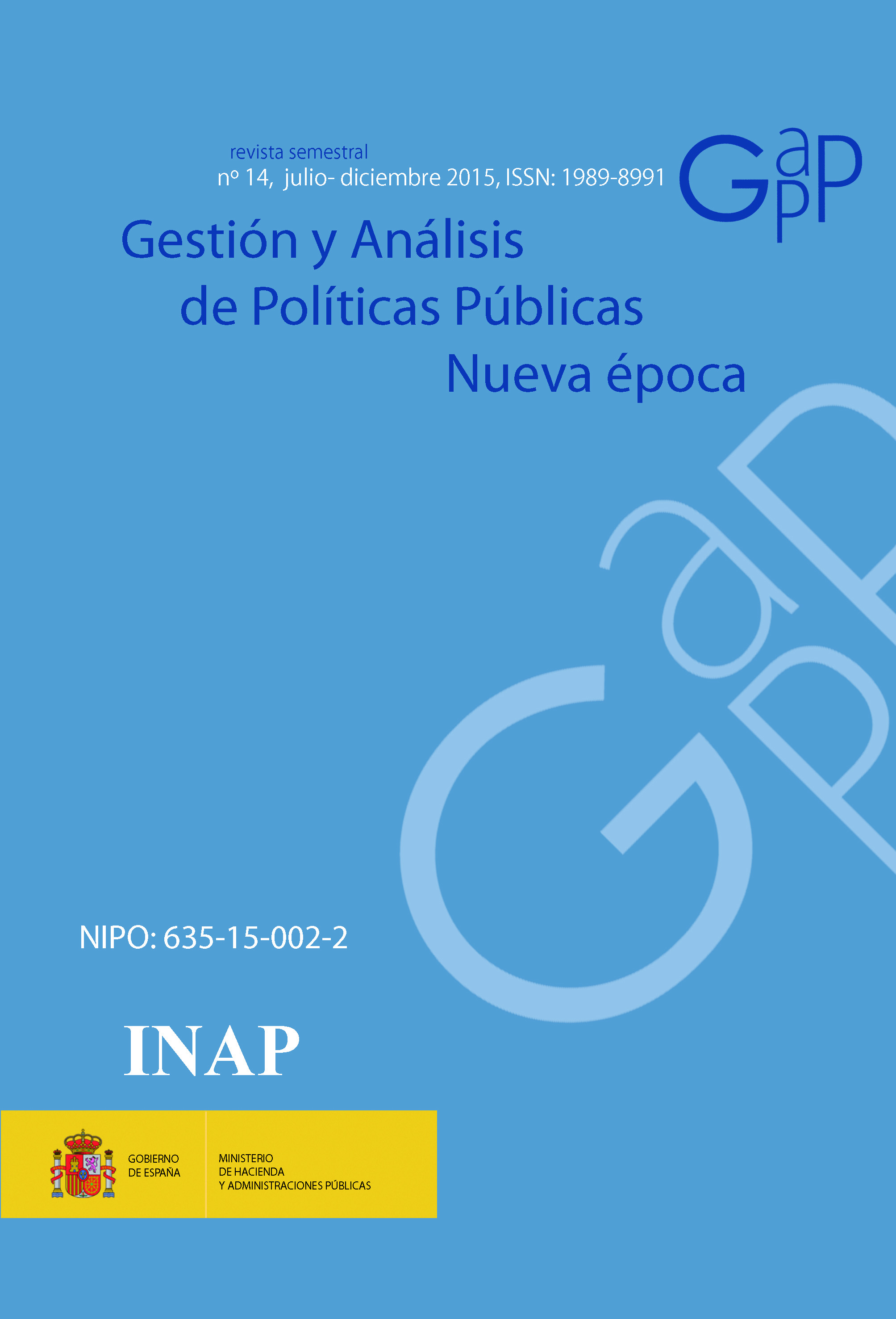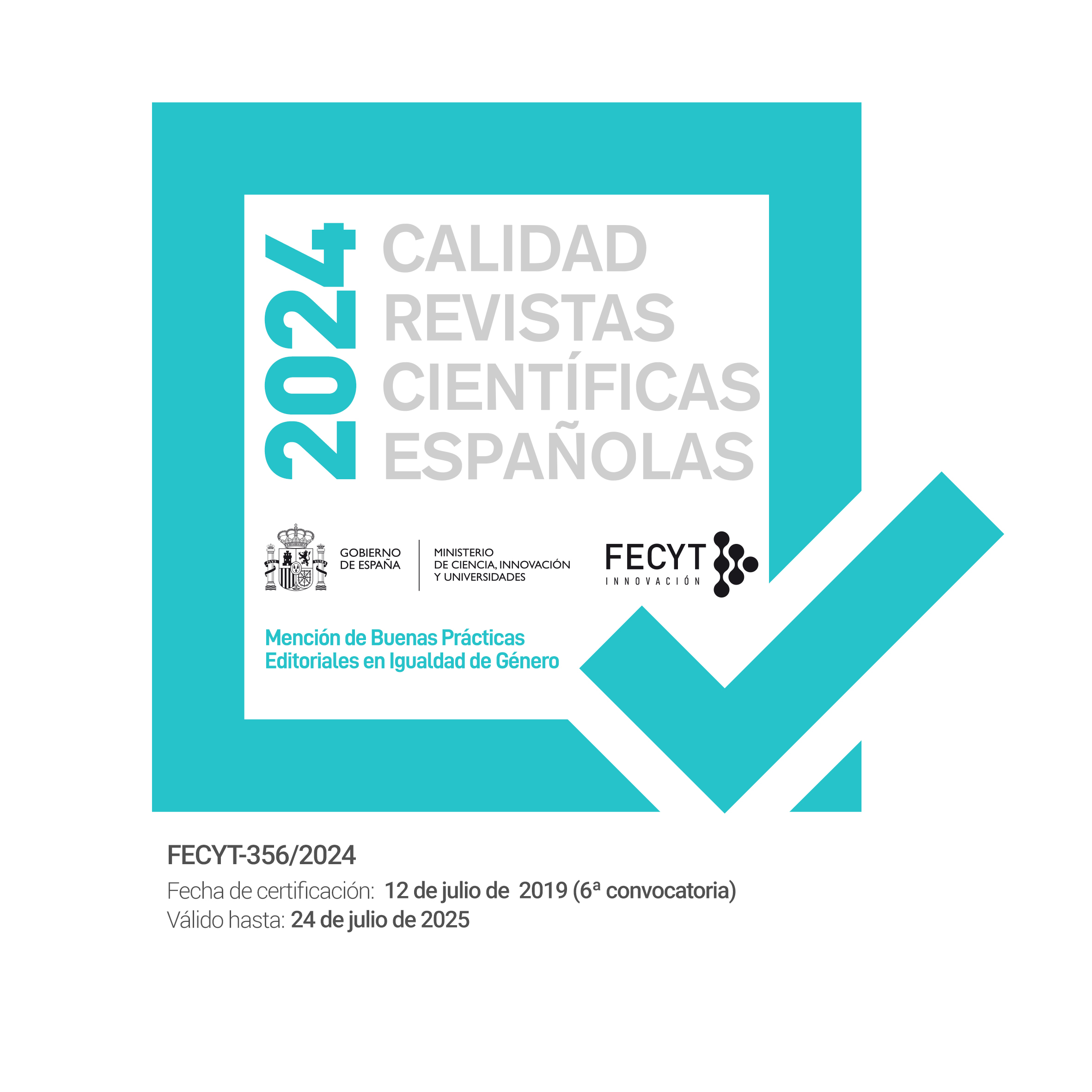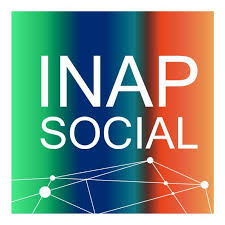Structural analysis strategies applied to assess Public Policies
DOI:
https://doi.org/10.24965/gapp.v0i14.10289Keywords:
Coalitions, implementation, inter-organizational networks, program evaluation, Public policies, Social Network AnalysisAbstract
Public Policies are embodied through programs implemented by different organizations. When several agencies are responsible for carrying out a program, this set of organizations may take the form of an inter-organizational network. Structural analysis make possible to assess this kind of structures so that the results of the evaluation has a positive impact on the outcomes of the initiative developed by the network. In this paper we present the potential of Social Network Analysis (SNA) to assess inter-organizational networks which develops intervention programs. To introduce the key elements to develop a structural evaluation, the paper is divided in four sections. First section is devoted to show antecedents in which inter-organizational network analysis is used to assess programs. In the second section we review the core points to design a structural analysis. The third focuses on expose different measures that can be used to assess inter-organizational networks. In the last section we reflect on the potential of SNA in the evaluation of public policies. Finally, emerging techniques which may improve the outcomes of the evaluation process are reviewed.Downloads
References
Abbasi, A., y Kapucu, N. (2012), “Structural dynamics of organizations during the evolution of interorganizational networks in disaster response”, Journal of Homeland Security and Emergency Management, 9(1): 1547. DOI: 10.1515/1547-7355.1975.
Atkinson, R., y Flint, J. (2001), “Accessing hidden and hard-to-reach populations: Snowball research strategies”, Social Research Update, 33(1): 1-4.
Bastian, M., Heymann, S., y Jacomy, M. (2009), “Gephi: an open source software for exploring and manipulating networks”, ICWSM, 8: 361-362.
Berg, E. (2006), “Snowball sampling—I”, Encyclopedia of Statistical Sciences. John Willey & Sons, Inc. DOI: 10.1002/0471667196.ess2478.pub2.
Biernacki, P., y Waldorf, D. (1981), “Snowball sampling: Problems and techniques of chain referral sampling”, Sociological Methods & Research, 10(2): 141-163. DOI: 10.1177/004912418101000205.
Borgatti, S.P., y Everett, M.G. (1999), “Models of Core/Periphery structures”, Social Networks, 21: 375-395. DOI: 10.1016/S0378-8733(99)00019-2.
Borgatti, S.P., y Molina, J.L. (2003), “Ethical and strategic issues in organizational social network analysis”, The Journal of Applied Behavioral Science, 39(3): 337-349. DOI: 10.1177/0021886303258111.
Browne, K. (2005), “Snowball sampling: using social networks to research non-heterosexual women”, International Journal of Social Research Methodology, 8(1): 47-60. DOI: 10.1080/1364557032000081663.
Buchthal, O. V., Taniguchi, N., Iskandar, L., y Maddock, J. (2013), “Assessing state-level active living promotion using network analysis”, Journal of Physical Activity and Health, 10: 19-32.
Bunger, A. C., Doogan, N. J., y Cao, Y. (2014), “Building Service Delivery Networks: Partnership Evolution Among Children’s Behavioral Health Agencies in Response to New Funding”, Journal of the Society for Social Work and Research, 5(4): 513-538. DOI: 10.1086/679224.
Cardazone, G., Sy, A. U., Chik, I., y Corlew, L. K. (2014), “Mapping one strong ‘Ohana: Using network analysis and GIS to enhance the effectiveness of a statewide coalition to prevent child abuse and neglect”, American Journal of Community Psychology, 53(3-4): 346-356. DOI: 10.1007/s10464-014-9641-7.
Carley, K. M., Pfeffer, J., Reminga, J., Storrick, J., y Columbus, D. (2013), ORA User’s Guide 2013. Carnegie Mellon University, School of Computer Science, Institute for Software Research, Technical Report, CMU-ISR-13-108,
Chavis D. (2001), “The Paradoxes and Promise of Community Coalitions”, American Journal of Community Psychology, 29(2): 309-320. DOI: 10.1023/A:1010343100379.
Cross, J. E., Dickmann, E., Newman-Gonchar, R., y Fagan, J. M. (2009), “Using mixed-method design and network analysis to measure development of interagency collaboration”, American Journal of Evaluation, 30(3): 310-329. DOI: 10.1177/1098214009340044.
Dekker, D., Krackhardt, D., y Snijders, T. A. B. (2007), “Sensitivity of MRQAP tests to collinearity and autocorrelation conditions”, Psychometrika, 72: 573-581. DOI: 10.1007/s11336-007-9016-1.
De Nooy, W., Mrvar, A., y Batagelj, V. (2011), Exploratory social network analysis with Pajek (Vol. 27). Cambridge University Press.
Eisenberg, M., y Swanson, N. (1996), “Organizational network analysis as a tool for program evaluation”, Evaluation & the Health Professions, 19(4): 488-506. DOI: 10.1177/016327879601900407.
Feinberg, M., Riggs, N. R., y Greenberg, MT (2005), “Social networks and community prevention coalitions”, Journal of Primary Prevention, 26(4): 279-298. DOI: 10.1007/s10935-005-5390-4.
Freeman, L. C. (1979), “Centrality in social networks conceptual clarification”, Social Networks, 1(3): 215-239. DOI: 10.1016/0378-8733(78)90021-7.
Friedkin, N. E. (1981), “The development of structure in random networks: an analysis of the effects of increasing network density on five measures of structure”, Social Networks, 3(1): 41-52. DOI: 10.1016/0378-8733(81)90004-6.
García-Valdecasas, J. I. (2011), “La simulación basada en agentes: una nueva forma de explorar los fenómenos sociales”, Revista Española de Investigaciones Sociológicas, 136(1): 91-109. DOI: 10.5477/cis/reis.136.91.
Gulati, R. (1995), “Social structure and alliance formation patterns: a longitudinal analysis”, Administrative Science Quarterly, 40: 619-652. DOI: 10.2307/2393756.
Gulati, R., y Sytch, M. (2007), “Dependence asymmetry and joint dependence in interorganizational relationships: Effects of embeddedness on a manufacturer’s performance in procurement relationships”, Administrative Science Quarterly, 52(1): 32-69. DOI: 10.2189/asqu.52.1.32.
Haines, V. A., Godley, J., y Hawe, P. (2011), “Understanding interdisciplinary collaborations as social networks”, American Journal of Community Psychology, 47(1-2): 1-11. DOI: 10.1007/s10464-010-9374-1.
Harris, J. K., Luke, D. A., Burke, R. C., y Mueller, N. B. (2008), “Seeing the forest and the trees: using network analysis to develop an organizational blueprint of state tobacco control systems”, Social Science & Medicine, 67(11): 1669-1678. DOI: 10.1016/j.socscimed.2008.07.013.
Harris, J. K., Provan, K. G., Johnson, K. J., y Leischow, S. J. (2012), “Drawbacks and benefits associated with inter-organizational collaboration along the discovery-development-delivery continuum: a cancer research network case study”, Implementation Science, 7(1): 69-83. DOI: 10.1186/1748-5908-7-69.
Huisman, M., y van Duijn, Marijtje A. J. (2011), “A reader’s guide to SNA software”. En J. Scott and P.J. Carrington (Eds.) The SAGE Handbook of Social Network Analysis (pp. 578-600). London: SAGE.
Huxham, C., y Vangen, S, (2005), Managing to Collaborate: The Theory and Practice of Collaborative Advantage. London: Routledge.
Isett, K. R., Mergel, I. A., LeRoux, K., Mischen, P. A., y Rethemeyer, R. K. (2011), “Networks in public administration scholarship: Understanding where we are and where we need to go”, Journal of Public Administration Research and Theory, 21(suppl 1): i157-i173. DOI: 10.1093/jopart/muq061.
Isett, K. R., y Provan, K. G. (2005), “The evolution of dyadic interorganizational relationships in a network of publicly funded nonprofit agencies”, Journal of Public Administration Research and Theory, 15(1): 149-165. DOI: 10.1093/jopart/mui008.
Jones, C., Hesterly, W. S., y Borgatti, S. P. (1997), “A general theory of network governance: Exchange conditions and social mechanisms”, Academy of Management Review, 22(4): 911-945. DOI: 10.5465/AMR.1997.9711022109
Jordana, J. (2009), “Examinando las redes de actores en el análisis de las políticas públicas: debate teórico y técnicas cuantitativas”, Gestión y Análisis de Políticas Públicas, 1: 9-16.
Kickert, Walter J. M., Erik-Hans Klijn, y Koppenjan, J. (eds.) (1997), Managing Complex Networks: Strategies for the Public Sector. London: Sage Publications.
Knoke D., y Yang, S. (2008), Social Network Analysis. Sage Publications Thousand Oacks. California. C. A.
Krackhardt, D. (1988), “Predicting with networks: Nonparametric multiple regression analysis of dyadic data”, Social Networks, 10: 359–381. DOI: 10.1016/0378-8733(88)90004-4.
Lecy, J. D., Mergel, I. A., y Schmitz, H. P. (2014), “Networks in Public Administration: Current scholarship in review”, Public Management Review, 16(5): 643-665. DOI: 10.1080/14719037.2012.743577.
Li, J., Weeks, M. R., Borgatti, S. P., Clair, S., y Dickson-Gomez, J. (2012), “A social network approach to demonstrate the diffusion and change process of intervention from peer health advocates to the drug using community”, Substance Use & misuse, 47(5): 474-490. DOI: 10.3109/10826084.2012.644097.
Long, J. C., Cunningham, F. C., y Braithwaite, J. (2013), “Bridges, brokers and boundary spanners in collaborative networks: a systematic review”, BMC Health Services Research, 13(1): 158. DOI:10.1186/1472-6963-13-158.
Luke, D. A., Harris, J. K., Shelton, S., Allen, P., Carothers, B. J., y Mueller, N. B. (2010), “Systems analysis of collaboration in 5 national tobacco control networks”, American Journal of Public Health, 100(7):1290-1297. DOI: 10.2105/AJPH.2009.184358.
Macal, C. M., y North, M. J. (2010), “Tutorial on agent-based modelling and simulation”, Journal of Simulation, 4(3): 151-162. DOI:10.1057/jos.2010.3.
Mascia, D., Cicchetti, A., y Damiani, G. (2013), “Us and Them: a social network analysis of physicians’ professional networks and their attitudes towards EBM”, BMC Health Services Research, 13(1): 1-8. DOI: 10.1186/1472-6963-13-429.
McCarty, C. (2002), “Structure in personal networks”, Journal of Social Structure, 3(1). http://www.cmu.edu/joss/content/articles/volume3/McCarty.html.
Mitchell, J.C. (1969), Social networks in urban settings. Manchester, UK: Manchester University Press.
Mizruchi, M. S., y Marquis, C. (2006), “Egocentric, sociocentric, or dyadic?: Identifying the appropriate level of analysis in the study of organizational networks”, Social Networks, 28(3): 187-208. DOI:10.1016/j.socnet.2005.06.002.
O’Madadhain, J., Fisher, D., Smyth, P., White, S., y Boey, Y. B. (2005), “Analysis and visualization of network data using JUNG”, Journal of Statistical Software, 10(2): 1-35.
O’Toole, L. J., Jr. (1997), “Treating Networks Seriously: Practical and Research- Based Agendas in Public Administration”, Public Administration Review, 57(1): 45–52. DOI: 10.2307/976691.
Owen-Smith, J., y Powell, W.W. (2004), “Knowledge networks as channels and conduits: The effects of spillovers in the Boston biotechnology community”, Organization Science, 15: 5-21. http://dx.doi.org/10.1287/orsc.1030.0054.
Provan, K.G, Fish, A., y Sydow, J. (2007), “Interorganizational Networks at the Network Level: A Review of the Empirical Literature on Whole Networks”, Journal of Management, 33(3): 479-516. DOI: 10.1177/0149206307302554.
Provan, K.G., Huang, K., y Milward, B. (2009), “The Evolution of Structural Embeddedness and Organizational Social Outcomes in a Centrally Governed Health and Human Services Network”, Journal of Public Administration Research and Theory, 19, 873-893. DOI: 10.1093/jopart/mun036.
Provan, K. G., y Milward, H. B. (2001), “Do networks really work? A framework for evaluating public-sector organizational networks”, Public Administration Review, 61(4): 414-423. DOI: 10.1111/0033-3352.00045.
Provan, K. G., Veazie, M. A., Shaten, L. K., y Teufel-Shone, N. I. (2005), “The Use of Network Analysis to Strengthen Community Partnership”, Public Administration Review, 65(5): 603-613. http://www.jstor.org/stable/3542526.
Ramanadhan, S., et al. (2012), “Addressing cancer disparities via community network mobilization and intersectoral partnerships: a social network analysis”, PloS one, 7(2): e32130. DOI: 10.1371/journal.pone.0032130.
Ramos-Vidal, I. (2015a), “Análisis de Redes Sociales: Una herramienta efectiva para la evaluación de coaliciones comunitarias”, Revista de Salud Pública, 17(3): 323-336. DOI: http://dx.doi.org/10.15446/rsap.v17n3.43051
Ramos-Vidal, I. (2015b), “La detección de actores clave en redes inter-organizativas: una propuesta metodológica”, (Aceptado).
Ramos-Vidal, I. (2015c), “Popularidad y relaciones entre iguales en el aula: Un estudio prospectivo”, Psicología Educativa. (En revisión).
Ramos-Vidal, I., Holgado, D., Maya-Jariego, I., y Palacio, J. (2014)”, Evaluación de procesos comunitarios y análisis de redes inter-organizativas: aportaciones para mejorar la efectividad de las intervenciones comunitarias”, Pensando Psicología, 10(17): 135-148. DOI: http://dx.doi.org/10.16925/pe.v10i17.798.
Ramos-Vidal, I., y Maya Jariego, I. (2013), “Alianzas y redes de colaboración entre las agrupaciones culturales de las Artes Escénicas en Andalucía”, Empiria: Revista de Metodología en Ciencias Sociales, 26(2): 15-34. DOI: http://dx.doi.org/10.5944/empiria.26.2013.7151.
Ricaurte, P., y Ramos-Vidal, I. (2015), “Aplicaciones del Análisis de Redes Sociales para investigar entornos digitales”, Revista Virtualis, 11(1): 165-194.
Rieder, B. (2013), “Studying Facebook via data extraction: the Netvizz application”, Proceedings of the 5th Annual ACM Web Science Conference (pp. 346-355). ACM.
Ripley, R. M., Snijders, T.A.B., Boda, Zsófia., Vörös, A., y Preciado, P. (2014), Manual for SIENA versión 4.0. Oxford: University of Oxford, Department of Statistics; Nuffield College.
Robins, G., Snijders, T., Wang, P., Handcock, M., y Pattison, P. (2007), “Recent developments in exponential random graph (p*) models for social networks”, Social Networks, 29(2): 192-215. DOI:10.1016/j.socnet.2006.08.003.
Rowley, T. J. (1997), “Moving beyond dyadic ties: A network theory of stakeholder influences”, Academy of Management Review, 22(4): 887-910. DOI: 10.5465/AMR.1997.9711022107.
Russell, M. A. (2013), Mining the Social Web: Data Mining Facebook, Twitter, LinkedIn, Google+, GitHub, and More. O’Reilly Media, Inc.
Santolaya, F.J., Ramos-Vidal I., Jurado, M.J., Holgado, D., y Maya Jariego, I. (2011), Las condiciones laborales de la Industria Cultural en Andalucía: Redes organizativas y compromiso con la comunidad de los trabajadores de las artes escénicas. Córdoba. Fundación de Estudios Sindicales. Consejería de Cultura Junta de Andalucía. http://www.estudiossindicales.andalucia.ccoo.es/Documentos/file/Ind_Cult_2011_estudio%20completo.pdf.
Shelley, G. A., Bernard, H. R., Killworth, P., Johnsen, E., y McCarty, C. (1995), “Who knows your HIV status? What HIV+ patients and their network members know about each other”, Social Networks, 17(3): 189-217. DOI:10.1016/0378-8733(95)00262-M.
Snijders, T. A., Pattison, P. E., Robins, G. L., y Handcock, M. S. (2006), “New specifications for exponential random graph models”, Sociological Methodology, 36(1): 99-153. DOI: 10.1111/j.1467-9531.2006.00176.x.
Stufflebeam, D. L., y Shinkfield, A. J. (2007), Evaluation Theory, Models, and Applications. San Francisco CA: Jossey-Bass.
Tichy, N. M., Tushman, M. L., y Fombrun, C. (1979), “Social network analysis for organizations”, Academy of Management Review, 4(4): 507-519. DOI: 10.5465/AMR.1979.4498309.
Trier, M., y Bobrik, A. (2007), “Analyzing the Dynamics of Community Formation.
using Brokering Activities”, En Proceedings of the Third Communities and Technologies Conference (463-477), Michigan. Springer Series. DOI: 10.1007/978-1-84628-905-7_23.
Valente, T. W., Chou, C. P., y Pentz, M. A. (2007), “Community coalitions as a system: Effects of network change on adoption of evidence-based substance abuse prevention”, American Journal of Public Health, 97(5): 880-886.
Valente, T.W., Coronges, K.A., Stevens, G.D., y Cousineau, M.R. (2008), “Collaboration and competition in a children’s health initiative coalition: A network analysis”, Evaluation and Program Planning, 31(4): 392-402. DOI: 10.1016/j.evalprogplan.2008.06.002.
Vedung, E. (2008), Public policy and program evaluation. Transaction Publishers. New Brunswick: New Jersey.
Wasserman, S., y Faust, K. (1994), Social Network Analysis: Methods and Applications. Cambridge MA: Cambridge University Press.
Wendel, M. L., Prochaska, J. D., Clark, H. R., Sackett, S., y Perkins, K. (2010), “Interorganizational network changes among health organizations in the Brazos Valley, Texas”, The Journal of Primary Prevention, 31(1-2): 59-68. DOI: 10.1007/s10935-010-0203-y.












